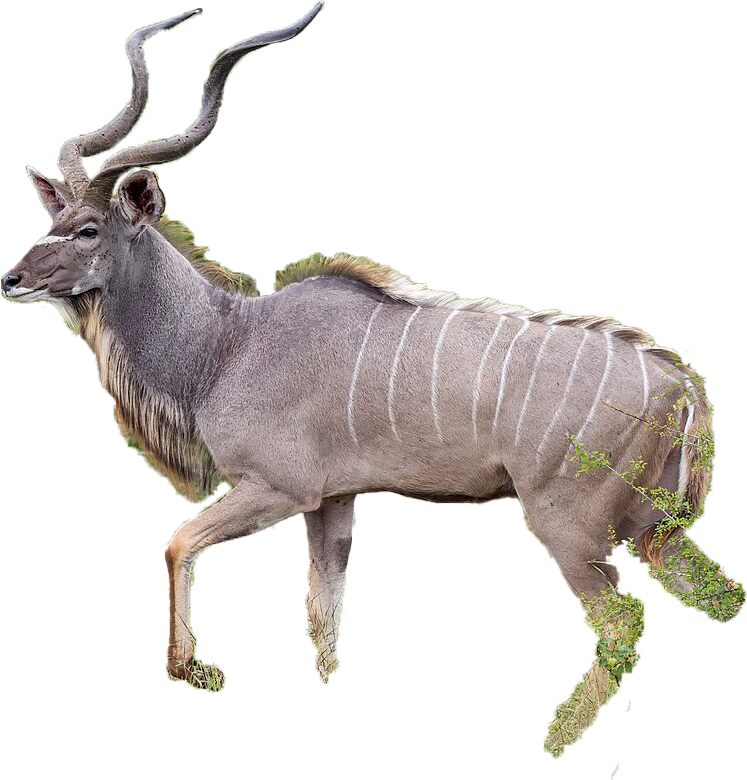
Description:
have a narrow body with long legs, and their coats can range from brown/bluish grey to reddish brown. They possess between 4 and 12 vertical white stripes along their torso. The head tends to be darker in colour than the rest of the body, and exhibits a small white chevron which runs between the eyes. Greater kudu bulls tend to be much larger than the cows, and vocalize much more, utilizing low grunts, clucks, humming, and gasping.he bulls also have beards running along their throats, and large horns with two and a half twists, which, were they to be straightened, would reach an average length of 120 cm. Bulls weigh 190–270 kg and stand up to 160 cm tall at the shoulder. The ears of the greater kudu are large and round. Cows weigh 120–210 kg and stand as little as 100 cm tall at the shoulder; they are hornless, without a beard or nose markings. The head-and-body length is 185–245 cm , to which the tail may add a further 30–55 cm
Habitat:
Ranges from the east in Ethiopia, Tanzania, Eritrea and Kenya into the south where they are found in Zambia, Angola, Namibia, Botswana, Zimbabwe and South Africa. Other regions where greater kudu are located are Central African Republic, Chad, Democratic Republic of the Congo, Djibouti, Eswatini, Malawi, Mozambique, Somalia, and Uganda.
Diet:
Their diet consists of leaves, grass, shoots and occasionally tubers, roots and fruit.
Behavior:
During the day, greater kudus normally cease to be active and instead seek cover under woodland, especially during hot days. They feed and drink in the early morning and late afternoon, acquiring water from waterholes or roots and bulbs that have a high water content. Although they tend to stay in one area, the greater kudu may search over a large distance for water in times of drought.